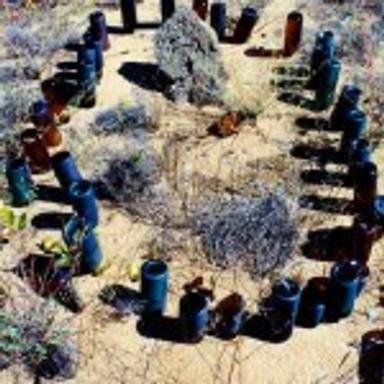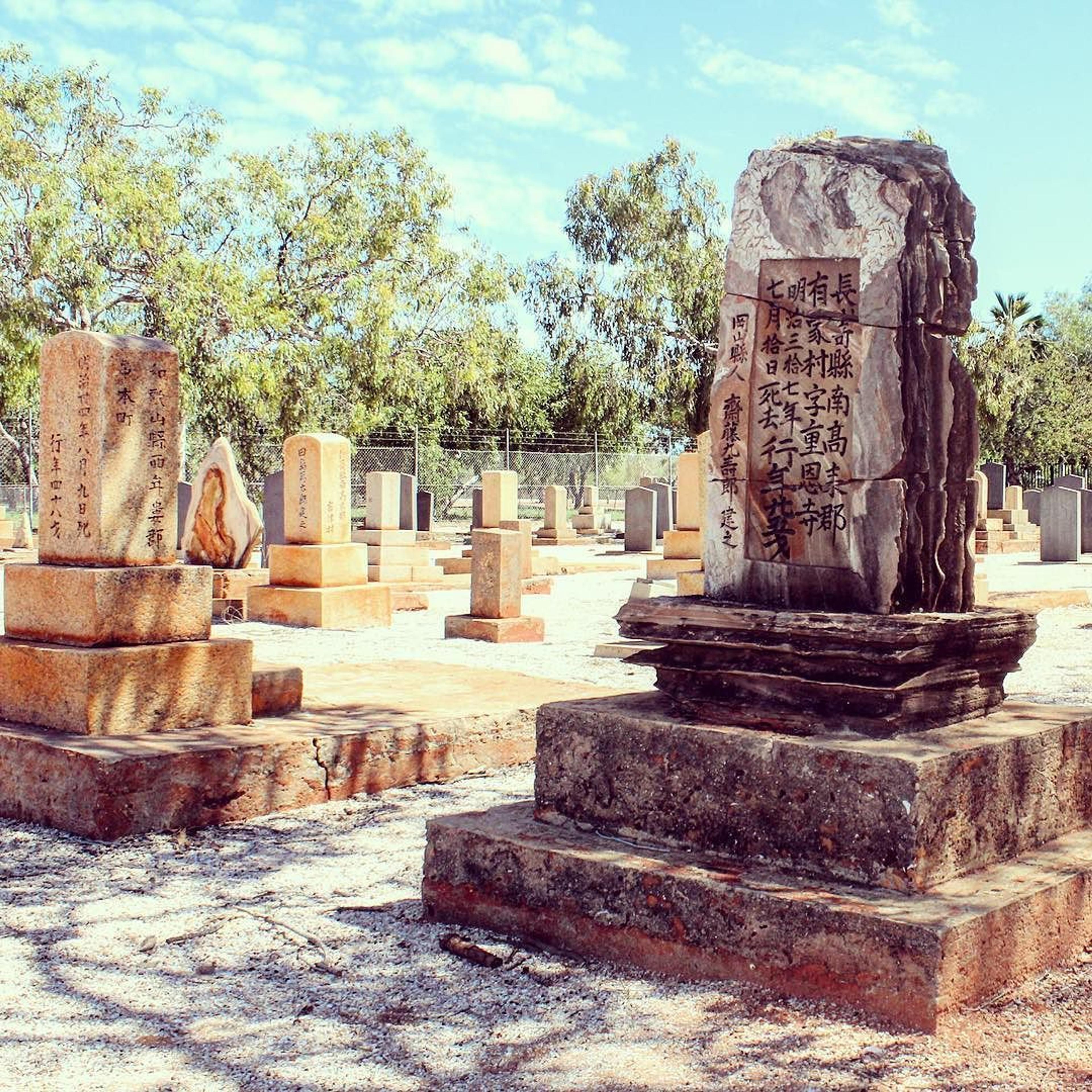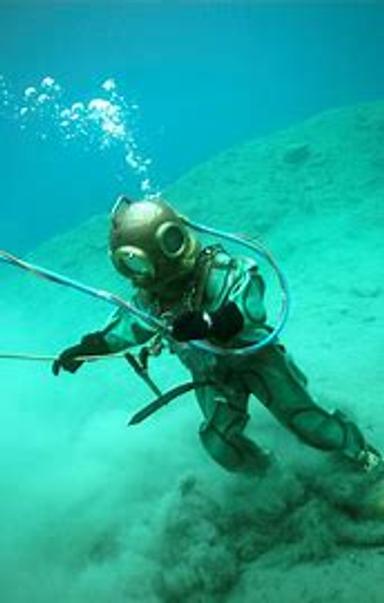Beryl
Vessel Name: Beryl
Kisayoshi Fuchigami
Drowned; body recovered
25 February 1920

Cape Bossut grave

Japanese Cemetery

Underwater Pearl Diver
As the price of pearl shell increased, so did the demand for schooners and indentured sea men from Asia. Fremantle and Perth boat builders were swamped with orders. Broome answered the demand by building schooners for the pearling fleets. One such builder was Murphy-Shrager & Co. They built Sea Gull, Charlie, Mean and Beryl.
Beryl was registered as number 30 of 1903. Her official number was 119014.She was rigged on fore and aft masts. Her measurements were 36.5 ft [12m] x 12 ft [4m] x 5ft [1.5m]. She was built for Lawrence Warton, pearler and the resident magistrate of Broome.
Luggers were sold and bought every day in Broome’s heyday. Boat builder CN Murphy owned ten schooners in 1904, the largest fleet at the time. By 1919 Beryl had been owned by Streeter & Male, James Clark & Co, James Theodore McKenzie and Charles Beltrand Alexander, all Broome pearlers and fleet owners.
Charles Alexander was born in 1889 in Bath, England. He left home after school to find adventure. He arrived in Albany, WA in 1905 on a merchant ship, and made his way to the Kalgoorlie goldfields. He missed the ocean and his next adventure was the journey to Fremantle. He boarded a coastal steamer for Broome to try pearling. He was a fast learner and educated. It did not take him long to become a shell opener, then a skipper. He bought his first lugger and was on his way to becoming a master pearler. The start of World War l lit a new spark in Charles, and he made his way to Fremantle to join the Light Horse. He was too late to enlist there. Not deterred he left his fiancée and made his way to Melbourne and joined the Light Horse there. As luck had it, Charles failed the medical. A recent appendectomy caused complications, and he was declared unfit. He headed back to the northwest and his growing pearl fleet.
Beryl had a few adventures of her own. In 1905 she was working out of Port Darwin when she was stolen by two Japanese divers who had accumulated large gambling debts they could not pay. The steamer Pretoria went after her and took her back to Port Darwin. In 1907 her owner Australian Pearling Syndicate went into liquidation, and Beryl and seven other vessels were offered for sale by public auction. In 1915 Beryl was one of two vessels mentioned in the Colonial Court of Admiralty. Apparently, the crew had not been paid in November 1914, nor had their return passage to Singapore paid. Lawrence Warton was ordered to pay wages and costs of £143 and the Court ordered him to sell the two boats by public auction.
In 1920 Beryl was the schooner for a number of luggers. The number one diver was Kisayoshi Fuchigami. He was the skipper and head of the fleet. There were two more Japanese aboard: a second diver and a tender. The master and shell opener for the fleet was Charlie Middleton. Also aboard were three indentured Malay men, who operated the pump and carried out the deck work.
There were nine other schooners with their luggers in Charles Alexander’s fleet: Dorothy, Ballie, Doric, Dove, Pettina, Battler, Myrtle Olga, Tifera and Eric. they took their pearls to the Beryl each evening. Charlie kept a tally of the shell taken and organised for its transport. Beryl moved backwards and forwards between shore and fleet vessels replenishing their supplies and ensuring they had fresh water, food and firewood.
On 23 February 1920 Charles Alexander gave Charlie his orders for the coming weeks. It was the end of the layup, and the fleet was preparing for the new season. Some of the boats had made their way to the shell field south of Cape Bossut, the southernmost point of LaGrange Bay. Charles gave Charlie the locked wooden box where the fleet’s pearls were placed until they made their way back to Broome.
Beryl was stocked with stores for the fleet and Charlie took his personal effects and met the dinghy waiting to take him to the schooner. He took off his shoes for the next few months and rolled up his pants.
The dinghy pitched in the choppy water, kicked up by the wind. As soon as Charlie was aboard, the crew pulled the dinghy up and lashed her across the hatch cover while he gave Kisayoshi Charles’ orders.
The next morning, 24 February, Beryl left Broome and ran into the open sea, making for Cape Bossut to meet the fleet, and take the boats to work the ground odd Cape Jaubert, 22 miles SSW of the anchorage there. The sky was dirty with low black rain clouds. Wind turned the wave tops to foam. The NW wind caused Beryl to roll and ship water over her bows. Once clear of Disaster Rocks, they ran SW towards Cape Bossut. The wind was strengthening, and the waves grew bigger. By afternoon both the main and jib sails were reefed twice. The wind was howling, and the men lashed the foresail to the boom. The shrouds and stays thrummed.
They arrived at Cape Bossut at 6pm, and the skipper picked a mooring place. The crew let go the anchor. They ate a meal and headed for their bunks, exhausted. They kept four-hour watches, keeping an eye on the anchor chain so that it did not wear through in the wind and steep waves.
At midnight the watch woke the skipper and told him they were in danger of dragging their anchor in the running tide. The skipper ordered the anchor be heaved up. They were going to run to the creek for shelter from the rising wind and tide. With the anchor aweigh Kisayoshi brought the tiller over hard. The bow swung to port and Beryl went beam on to the heavy sea. She began to roll.
The men below felt her roll and ran up on deck. Charlie went forward to help with the sails and then returned to the skipper. They followed the light from the lighthouse to Bossut Creek. Charlie went to the bow to keep a look out. As Beryl got closer to land waves broke directly in front of her. Charlie shouted a warning to Kisayoshi, but he could not be heard in the howling wind.
Beryl struck the rocky ledges on the eastern side of the creek entrance. She rolled beam on to the violent sea. As the waves broke over the deck, Kisayoshi was swept overboard. With no one at the tiller the crew grabbed whatever they could, preparing for the boat to break up. One by one the crew were washed into the white water. Charlie grabbed a lifebelt and put it on before he was torn from the main mast.He held onto a rocky outcrop and dragged himself above the waterline.
The crew crawled or were thrown ashore, bruised and cut by barnacles and rocks.They gathered on the rocky beach. After some time they realised Kisayoshi had not been thrown ashore where they were. They started a search, calling out into the night. There was no response from the skipper.
At dawn on the 25 February the survivors made their way up the creek to Moss & Richardson’s layup camp. They reported the loss of the Beryl and Kisayoshi. The crew kept searching. At 1pm they found Kisayoshi’s body in the mangroves at the creek entrance.
Japanese divers took Kisayoshi’s body back to the camp and they made a coffin from packing boxes supplied by Mr Baxter who managed the layup camp. Kisayoshi was buried across the creek opposite the lay up camp.
Charlie and the remaining crew spent a few days salvaging wreckage from the Beryl. They found heavier items such as the diving pump, lead boots and helmets. At 3pm on 1 March they left the creek and returned to Broome to report the loss of the Beryl and Kisayoshi to the authorities.
In Broome Japanese divers made a memorial stone for Kisayoshi in the Japanese Cemetery. He was 29 years old.
